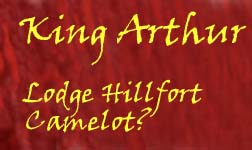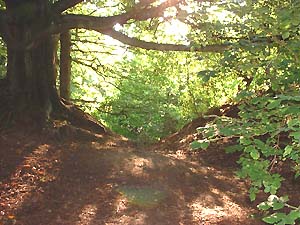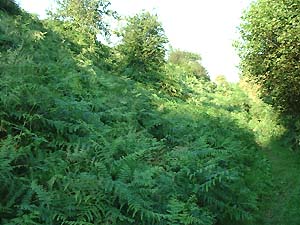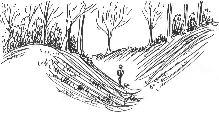Was Lodge Wood Camp Camelot?




Above: Old
aerial photo of Lodge Wood Camp
Below: The site is now overgrown


If Arthur made Caerleon his base he would have surely chosen this, the site of an Iron Age fort, as the location for his 'castle'.
The site, known as 'Belinstocke' meaning stronghold of Belin, was occupied by the Silures when the Romans arrived. Built on the highest part of Lodge Hill it commands extensive views.
The ramparts, up to ten metres high in places, are now overgrown with huge trees and thick bracken. Seen in plan view, these form enclosures looking for all the world like a giant's footprint. The main enclosure is over 400 metres long and just under 200 metres wide.
The Romans built a road from the North Gate of Caerleon right up to the fort and used the hill-top as a summer camp. It clearly would have been a most impressive site for Arthur to choose - overlooking the Roman fortress and with views right down the River Usk and out over the Bristol Channel!
The Hill Fort is well worth a visit. A footpath follows the ramparts on the South side, and a bridleway traces an ancient track through the centre of the site. A free leaflet, produced by Newport County Borough Council, is available in Caerleon's Tourist Office with details of the walk. Visitors with a car should drive up Lodge Road, which starts by the village common, and then branch right to the top of Lodge Hill. Here parking is easy and the footpath can be joined.
In June 2000 a team of Archaeologists from the University of Wales, Newport, excavated three areas of the site. Follow this link for a report and photos.


Sketches by Harry de Caux